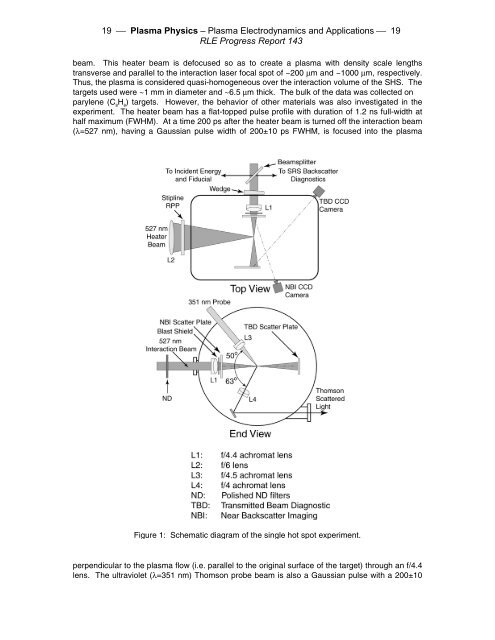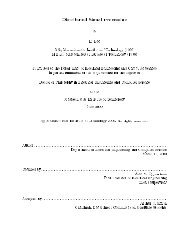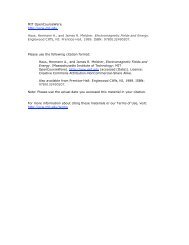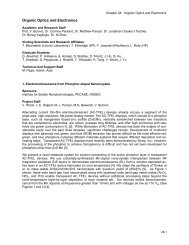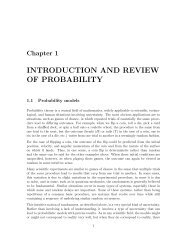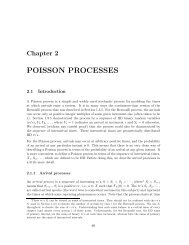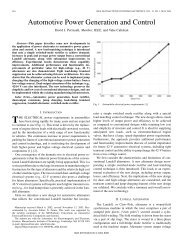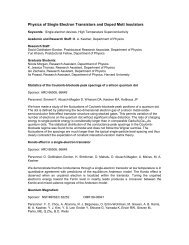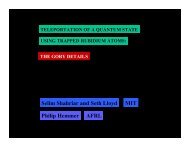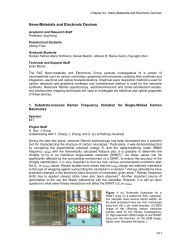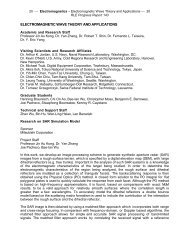RLE Progress Report No - Research Laboratory of Electronics - MIT
RLE Progress Report No - Research Laboratory of Electronics - MIT
RLE Progress Report No - Research Laboratory of Electronics - MIT
Create successful ePaper yourself
Turn your PDF publications into a flip-book with our unique Google optimized e-Paper software.
eam. This heater beam is defocused so as to create a plasma with density scale lengths<br />
transverse and parallel to the interaction laser focal spot <strong>of</strong> ~200 µm and ~1000 µm, respectively.<br />
Thus, the plasma is considered quasi-homogeneous over the interaction volume <strong>of</strong> the SHS. The<br />
targets used were ~1 mm in diameter and ~6.5 µm thick. The bulk <strong>of</strong> the data was collected on<br />
parylene (C 8<br />
H 8<br />
) targets. However, the behavior <strong>of</strong> other materials was also investigated in the<br />
experiment. The heater beam has a flat-topped pulse pr<strong>of</strong>ile with duration <strong>of</strong> 1.2 ns full-width at<br />
half maximum (FWHM). At a time 200 ps after the heater beam is turned <strong>of</strong>f the interaction beam<br />
(λ=527 nm), having a Gaussian pulse width <strong>of</strong> 200±10 ps FWHM, is focused into the plasma<br />
Figure 1: Schematic diagram <strong>of</strong> the single hot spot experiment.<br />
perpendicular to the plasma flow (i.e. parallel to the original surface <strong>of</strong> the target) through an f/4.4<br />
lens. The ultraviolet (λ=351 nm) Thomson probe beam is also a Gaussian pulse with a 200±10


